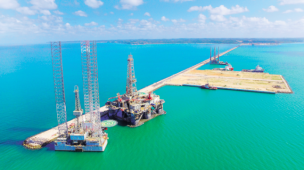Tempo de leitura: 3 minutos
The Foreign Trade Corporation of Costa Rica (PROCOMER) presented the report named Balance of the Free Trade Zones: Net Benefit of the Regime for Costa Rica 2014-2018, which analyzes and exposes what the Free Trade Regime represented for the country in 2018, in economic and social terms. Furthermore, it is important to supplement this study with certain data to October of 2019, with the purpose of putting into context the actual growth in this sector. When analyzing this report, it is easy to conclude that, with this regime Costa Rica pinpointed its success from every point of view and its balance continues to be highly positive, in essential aspects for the development of the country.
At the end of 2018, Costa Rica reported 375 active companies in the free trade regime, 44 more than the amount reported in the previous report. 52% of the beneficiaries of such regime correspond to the services sector, 13% to the manufacture of precision and medical equipment, and the rest to other industries.
The report presented by PROCOMER shows that the Regime is socially profitable for Costa Rica. The companies and employees of the Free Trade Regime contributed the significant sum of US$508 million to the Costa Rican Social Security System (CCSS) for the year 2018.
Free Trade Zones have also been highly successful in generating employment, as from 2017 to 2018 employment grew 11% when reaching 115,161 direct formal jobs. For the 2014-2018 period, women represented approximately 42% of the direct jobs of the Free Trade Regime. As if these figures were not enough, the beneficiaries of the free trade regime have also become important training engines for their employees, thereby creating higher added value for the Costa Rican workforce.
Free zone companies generate more and more productive chains with local providers, 47% of purchases made by free zone companies are from local companies, which proves that the local economy is becoming more and more competitive and has been able to adapt successfully to international quality standards. The domestic expense for the purchase of goods and services reached the sum of US$2,203 million in 2018.
In addition, the export of goods produced by the free zone regime represented 51% of the total exports of the country in the year 2018, represented by US$4,765 million and for the year 2019 it was 53%, represented by US$5,153 million. It is important to add that for 2019, precision and medical equipment represented 32% of exports, which today is the main export product.
In summary, and to encompass the foregoing figures, the total benefit generated by the free trade zones is equal to 7.9% of the GDP; in other words, the sum of US$4,721 million.
The calculations above do not include additional factors that are difficult to calculate and to represent statistically. These additional benefits include the incorporation of international quality standards in Costa Rican companies, the incorporation of eco-friendly practices, and social responsibility that contribute to the country’s sustainability, as well as the training of employees under the Free Zone Regime. All these aspects have an indirect impact on the development of our country.
Lastly, we cannot leave aside the important work performed by the Costa Rica Investment Promotion Agency (CINDE), supporting and encouraging companies to settle and invest in our country, generating 16,718 new jobs in the year 2019. The 308 companies supported by CINDE represent 118,245 direct jobs, 58,980 indirect Jobs and 10,141 net jobs. Altogether, the companies supported by CINDE represent 7% of the total employment in Costa Rica.
These numbers lead to the conclusion that the position of Costa Rica in the attraction of is greatly favored by the existence of the Free Trade Regime. Today, with numbers, the country proves that the bet in favor of the Free Zone Regime has been largely repaid and efforts to improve the country’s position at the global level must continue to increase foreign direct investment.






Os comentários foram encerrados, mas trackbacks e pingbacks estão abertos.